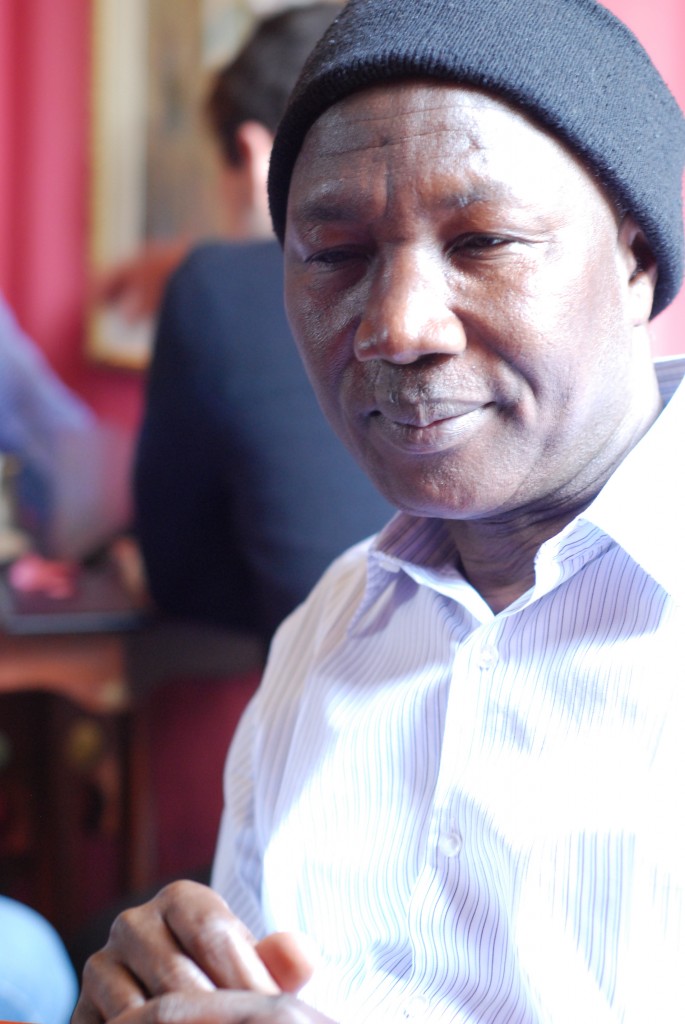What Mohammed Ahmed did in Darfur did not sound revolutionary, but it may have cost him the chance to return home. One by one, he and a handful of colleagues at their Nyala clinic documented each case they saw. The simple act of systematically documenting the torture meant that they are records that the group saved in their computers, of what Bashir’s men had done.
Last year, authorities answering to President Umar al-Bashir ransacked Dr. Ahmed’s home in Nyala, South Darfur, they did not harm his wife or neighbors. His eight children were busy at school, the older ones persuing pursuing degrees in medicine and engineering. They were looking for Dr. Ahmed, whom they blamed for the president’s indictment at the International Criminal Court in March 2009.
Did Dr. Ahmed’s work contribute to Bashir’s indictment? He pauses over lunch at a small café in Cambridge, where he now lives, and then casually says, “Maybe.”
Over a five-year period, Dr. Ahmed helped treat over 500 victims of rape and torture at the hands the Janjaweed, the Darfur-based militia group focused on driving members of the Fur tribe out of Sudan. Dr. Ahmed and his colleagues painstakingly documented each case along the way, recording them in their computers.
When the authorities came to his home in 2009, Dr. Ahmed was in the United States. The Robert F. Kennedy (RFK) Center for Justice and Human Rights had honored him in 2007 with the Human Rights Award. He traveled to the U.S. on their invitation to pursue funding for his programs in Darfur.
The plan was to go, secure financial support, then return home to his wife and his projects. After the authorities ransacked his home, however, his friends told him to stay away. The RFK center helped him secure a fellowship at Harvard where he now conducts research on public health and takes classes to learn about the U.S. medical system. It has been over a year since he saw his family.
Dr. Ahmed is a small man with dark skin and a bright, wide smile. He greets his “guest,” as he refers to his interviewer, at the Harvard Square T-stop after eagerly phoning to make his guest arrived safely. He wears a black skullcap covering his bald head, a stripped collar shirt, grey pants and shiny black loafers. He sports a simple silver digital Casio watch. He escorts his guest to the Algiers Café nearby and pauses for a long time before he speaks.
He says that when the war broke out in 2003, “the top [rebel] leader is one of my patients, and I have a good relation with his family, and he sent me a letter. So that was one of the shocks for me, because the community is not ready for war.” In response to “violations,” says Dr. Ahmed, the government declared war. They did not target the rebels; they first targeted civilians. “That’s a big decision; the decision of war is one of the difficult things.” Dr. Ahmed often references “the difficult things” as he talks.
Dr. Ahmed would rather talk about the war, his proposals for peace, and American policy than about his own story. A waitress comes and has a hard time understanding him. “No!” he booms when she thinks he told her that he was not ready to order. He smiles, stops trying to explain and simply points to his guest. After more prodding, and not until he has gone over his timeline, does Dr. Ahmed begin to tell his own story.
He was born in Jebel Marra in west Darfur. He is part of the Fur tribe, Sudan’s largest. When he was five, he joined his older brother walking roughly 70 kilometers, three days, to get to school. Villages along the way would host the boys, free of charge. He and his brother lived in dorms the rest of the semester. Their parents stayed home, in their village. They never went to school and they never liked going into town.
Dr. Ahmed earned a medical degree from the University of Khartoum Medical School and later taught medicine at Al-Fashir University in Darfur. He is the first doctor from his village. During breaks from medical school, he did not go home to visit his family. Instead, he travelled to other communities in Sudan to mentor other men in hopes that they, too, would join the medical field. Slowly, these communities started to see him as a leader.
Dr. Ahmed began worked with victims of the Janjaweed attacks through the Amel Center. In Sudan, “nobody likes to say she is raped. She will be divorced. If she’s younger, she will be killed by her elders. The simple thing is she will just be rejected by the community.”
In what turned out to be a revolutionary innovation, Dr. Ahmed and his colleagues decided to treat rape cases with the same confidentiality that Sudanese doctors would treat cancer or heart disease. Hundreds of otherwise silent women then came to them.
Dr. Ahmed knew the records of cases would be highly contested, but he and his colleagues wanted proof of “the unbelievable.” The actual statistics are highly contested. In 2006, Science magazine reported that the U.S. State Department underestimated the death toll by hundreds of thousands. Dr. Ahmed cannot speak to the total count, but he says that Bashir himself says that only 10,000 died. “That is the number he confessed. If the perpetrator confessed that it was only 10,000, what do you think the actual number would be?”
Now, Dr. Ahmed’s biggest concern is what his life choices mean for his parents. They are around 80 and 90 years old. If his family joins him, “it will be better for them … but who will take care of my parents?”
He stays for over two hours with his interviewer, inquiring into her studies and career path, waiting before his guest’s ride arrives, making sure everyone is well and then he quietly pays the bill and leaves.
